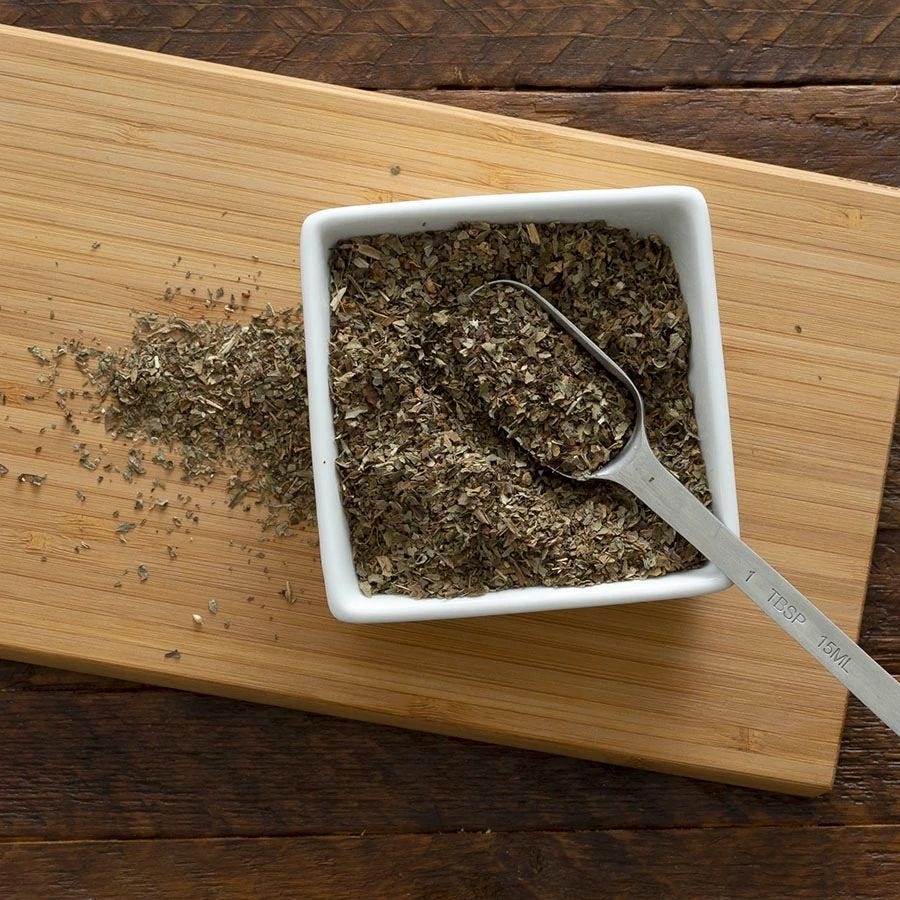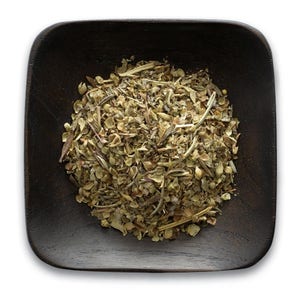Our Guide to the Best Basil Substitute
Basil, with its aromatic leaves and distinctive flavor, is a cherished herb in cuisines worldwide. But what exactly is basil? Originating from the Mediterranean region, basil boasts a fresh, herbaceous taste with hints of pepper and mint. This versatile herb is commonly used in a variety of dishes, from Italian pasta sauces to Thai curries, adding depth and character to culinary creations.
There are a few reasons why you may need to use a substitute for basil in your cooking. The most common reason is that you simply don't have any basil on hand. This can happen if you forget to buy it at the store or if it's out of season. Another reason is that you may have a food allergy or sensitivity to basil, or you may not enjoy its flavor. In these cases, using a substitute can still give your dishes a similar taste without compromising on flavor.
7 Basil Substitutes
- Oregano: A popular herb in Mediterranean and Italian cuisine, oregano is known for its strong and slightly bitter flavor. It's a great substitute for basil in dishes like pasta sauces, soups, and stews. Oregano can be used in both fresh and dried forms, but keep in mind that dried oregano is more potent, so you'll need to use less of it in your recipes.
- Spearmint: A commonly used herb in Middle Eastern and Asian cuisines, known for its refreshing and slightly sweet flavor. It's a great substitute for basil in dishes like salads, marinades, and cocktails. Spearmint can be used in both fresh and dried forms, but keep in mind that dried mint is more potent, so you'll need to use less of it in your recipes.
- Cilantro: Also known as coriander, is a popular herb in Mexican and Asian cuisines. It has a bright and citrusy flavor that can add a unique twist to dishes that call for basil. Cilantro is best used in fresh form, as dried cilantro doesn't have the same flavor profile. It's a great substitute for basil in dishes like salads, salsas, and curries.
- Parsley: This is a versatile herb that is commonly used in Mediterranean and Middle Eastern cooking. It has a mild and slightly peppery flavor that can be a good substitute for basil in dishes like pasta sauces, soups, and stews. Parsley can be used in both fresh and dried forms, but like other herbs, dried parsley is more potent.
- Thyme: Another herb commonly used in Mediterranean and French cooking. It has a slightly minty and lemony flavor, making it a great substitute for basil in dishes like pesto, marinades, and roasted vegetables. Thyme can be used in both fresh and dried forms, but like oregano, dried thyme is more potent.
- Tarragon: With its delicate anise-like flavor and hints of sweetness, tarragon can add a unique dimension to dishes as a basil substitute. Incorporate tarragon into sauces, dressings, and seafood dishes for a subtle yet distinctive taste.
- Italian Seasoning: A classic blend of Italian herbs like oregano, thyme, and basil perfect for adding Italian flavor not only to pasta and pizza, but enhancing any savory dish.
Tips for Successful Substitutions
When using a substitute for basil, it's important to keep in mind that the flavor may not be exactly the same as using fresh basil. However, these substitutes can still add depth and freshness to your dishes. Here are some tips for using basil substitutes in your cooking.
Experiment with Flavors
When substituting basil in your recipes, don't be afraid to get creative and experiment with different flavor combinations. Consider blending multiple substitutes together to create depth and complexity in your dishes. For example, combining mint with cilantro can offer a refreshing and herbaceous flavor profile, perfect for salads or marinades. Similarly, mixing parsley with thyme can add a savory and aromatic twist to roasted vegetables or meats. By exploring different flavor pairings, you can discover unique and exciting alternatives to basil that enhance your culinary creations.
Adjust Quantities
When using basil substitutes, it's essential to adjust the quantities to achieve the desired flavor profile. Start by adding a small amount of the substitute and gradually increase it to taste. Keep in mind that some substitutes may have a more potent flavor than others, so a little can go a long way. For example, if substituting oregano for basil, you may only need half the amount to achieve a similar flavor intensity. By carefully adjusting the quantities of the substitute, you can ensure that it complements the other ingredients in your dish without overpowering them.
Consider Culinary Applications
Take into account how the substitute will complement the overall flavor profile and culinary style of your recipe. Certain substitutes may be better suited for specific dishes or cuisines, so it's essential to consider the context in which you're using them. For example, tarragon's delicate flavor pairs well with seafood and poultry dishes, making it an excellent substitute for basil in French-inspired recipes. By considering the culinary applications of the substitute, you can ensure that it enhances the overall taste and experience of your dish.
By following these tips and guidelines, you can confidently explore basil substitutes and unlock a world of new flavors and culinary possibilities in your kitchen. Embrace the opportunity to experiment, adapt, and innovate as you discover the perfect substitutes to suit your taste preferences and cooking style.























